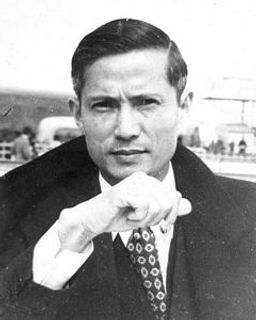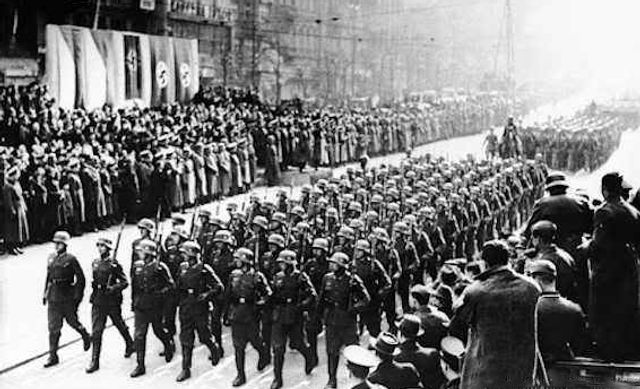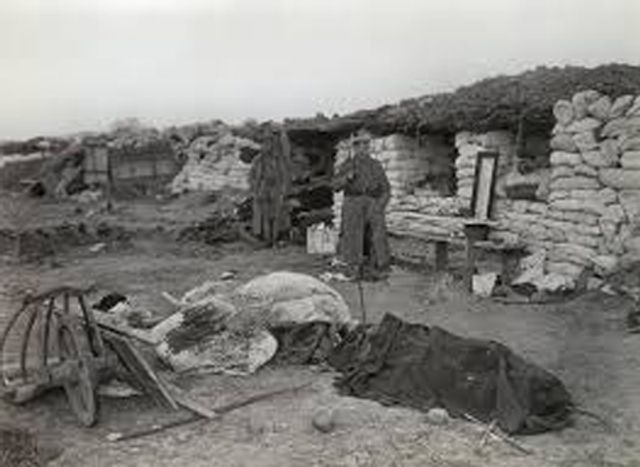25 years ago: Widespread protests force Haitian military ruler from office
 Prosper Avril
Prosper Avril
After days of anti-government demonstrations throughout all of Haiti’s major cities, Lt. Gen. Prosper Avril resigned the presidency on March 10, 1990. Two days earlier in the town of Petit Goave, 10,000 mourners attended the funeral of Rosaline Vaval, an 11-year-old schoolgirl who was shot down the previous Monday by a soldier breaking up an anti-government demonstration. The killing inflamed the anger of the population, provoking violent protests that shut down the capital, Port-au-Prince, and spread across the island nation.
Just the day before Avril quit office, a government spokesperson told the press, “Avril is ready to make concessions, but a hasty departure is out of the question.” He resigned the next day and by the morning of March 12 arrived via a US Air Force transport at Florida’s Homestead Air Force Base with his family. The US Atlantic Command in Norfolk, Virginia, said that Avril would be transported to his private estate in Boca Raton, Florida. However, crowds of protesters outside the air base delayed the transfer.
In the streets of Port-au-Prince, crowds lit bonfires to celebrate the news of Avril’s resignation. The demonstrations evoked those of February 1986, which brought down the despised regime of Jean-Claude (“Baby Doc”) Duvalier, and the continuing protests alarmed the Haitian ruling elite. Avril’s 18-month rule was marked by corruption, brutality and human rights violations.
The resignation was brokered behind closed doors by the US and French ambassadors and the Vatican and announced by acting army chief of staff Maj. Gen. Herard Abraham, who became interim president for 72 hours.
The deal called for Avril’s elite Presidential Guard to be dispersed to other parts of the country. A coalition of parties headed by Marc Bazin, a former finance minister and member of the World Bank under “Baby Doc” Duvalier, praised the deal. Bazin said the deal promised “free and fair” elections within three to six months and referred to the “irresponsible power of Gen. Avril, masked at times by violent and barbaric actions.”
On March 13, Supreme Court Judge Ertha Pascal-Trouillot was inaugurated by the army to head Haiti’s first civilian government since Duvalier’s fall in 1986.
50 years ago: US troop buildup in Vietnam
 Phan Huy Quat
Phan Huy Quat
On March 12, 1965, General Harold K. Johnson, Army chief of staff, returned from Southeast Asia to brief President Lyndon Johnson on the military situation, calling for more US troops to bolster the South Vietnamese puppet regime. US officials in Saigon demanded the immediate dispatch of a full army division to add to the force of 27,000 US troops and “advisers” already in the country. A contingent of 3,500 Marines arrived in Danang March 9, signaling the beginning of a troop buildup in Vietnam that would reach 180,000 by the end of the year.
While promising military leaders an all-out war in Southeast Asia, Johnson presented the introduction of US combat troops to the public as a defensive measure to protect US military installations. US military officials admitted that the situation in South Vietnam required emergency measures. The Saigon puppet army was disintegrating, with 30 percent of all draftees deserting within six weeks of entering basic training.
With the recent installation of Phan Huy Quat in yet another military coup, South Vietnam had its ninth government since the US-supported assassination of President Ngo Dinh Diem in November 1963. Tacitly recognizing the enormous superiority of the liberation fighters over the imperialist and puppet troops, in terms of morale and will to fight, US Ambassador Maxwell Taylor insisted that at least a ten-to-one numerical advantage was needed to ensure the survival of the regime. US military analysts estimated that no more than 110,00 poorly supplied North Vietnamese and National Liberation Front fighters were defeating a puppet army numbering 550,000 including regular and militia units.
75 years ago: Nazis declare “Gala Day” to celebrate conquest of Czechoslovakia
 The Nazi invasion of Czechoslavakia
The Nazi invasion of Czechoslavakia
On March 15, 1940, the Czech people were told by the Prague wireless station that they must celebrate the anniversary of the German Nazi invasion of Czechoslovakia as “Gala Day.” In Prague the main feature of the “celebrations” was a vast German military parade on the Vaclavske Namesti, complete with SS detachments, as German warplanes flew overhead.
The parade was held in the presence of Hitler’s representative Baron von Neurath, with the Czech puppet president Hacha seated next to him on the platform together with General Eminger, inspector general of the Czech military, commanding the German garrison.
In what translated as an admission by the Nazis of Czech restlessness, opposition and dissatisfaction with fascist occupation, Hitler sent Hacha a telegram telling him that it was not the intention of the German Reich to impose burdens of the Czech people that might threaten its national existence or to bring it into conflict with the needs of the Reich.
But the anniversary events coincided with the deadline that all Jewish Czech property had to be registered with the fascist authorities. German newspapers also announced that a message on “German place names in the Protectorate of Bohemia-Moravia” had been dispatched to the Czech government offices stating that in all correspondence with German authorities, the German names of Czech towns must be used.
To give the impression of Czech acquiescence, a contingent of 7,000 Czech government troops took part in the anniversary ceremonies with the soldiers restricted to ancient Mannlicher-style rifles with deliberately loosened triggers. Each man was equipped with only one round of ammunition.
Private houses were instructed to fly the Czech flag while public buildings hung both the German and Czech flags and those buildings used by both Czechs and Germans two swastika banners hung together with a single Czech flag.
100 years ago: The battle of Neuve Chapelle
 British wounded in German trenches near Neuve Chapelle
British wounded in German trenches near Neuve Chapelle
On March 10, 1915, British forces launched an offensive against German positions in the Artois region of France. The attack was an attempt to break through the stalemate on the Western Front of the First World War, which had emerged with the onset of protracted trench warfare at the end of 1914. The confrontation became known as the “Battle of Neuve Chapelle,” after the French town at which British forces focused their initial efforts in the offensive.
The British offensive was carefully planned and coordinated. Aerial reconnaissance took detailed images of German positions, enabling British commanders to identify Neuve Chapelle as a potential weak point in German defense lines. On March 10, the offensive began with an aerial bombardment, followed by an artillery barrage aimed at severing German communication lines and defenses.
In the early morning hours, British troops secured control of Neuve Chapelle, and set about establishing their own defensive positions in the town. On March 12, the Germans launched a counterattack involving some 16,000 troops, which failed and resulted in heavy casualties. The counterattack prompted British commanders to scuttle plans for further attacks, while consolidating their hold on Neuve Chapelle, and preparing for an offensive further to the north. These plans were subsequently abandoned due to a severe ammunition shortage.
In the space of around a week of slaughter, allied forces lost 7,000 British troops and 4,200 Indian soldiers. German losses were estimated at around 10,000.
No comments:
Post a Comment